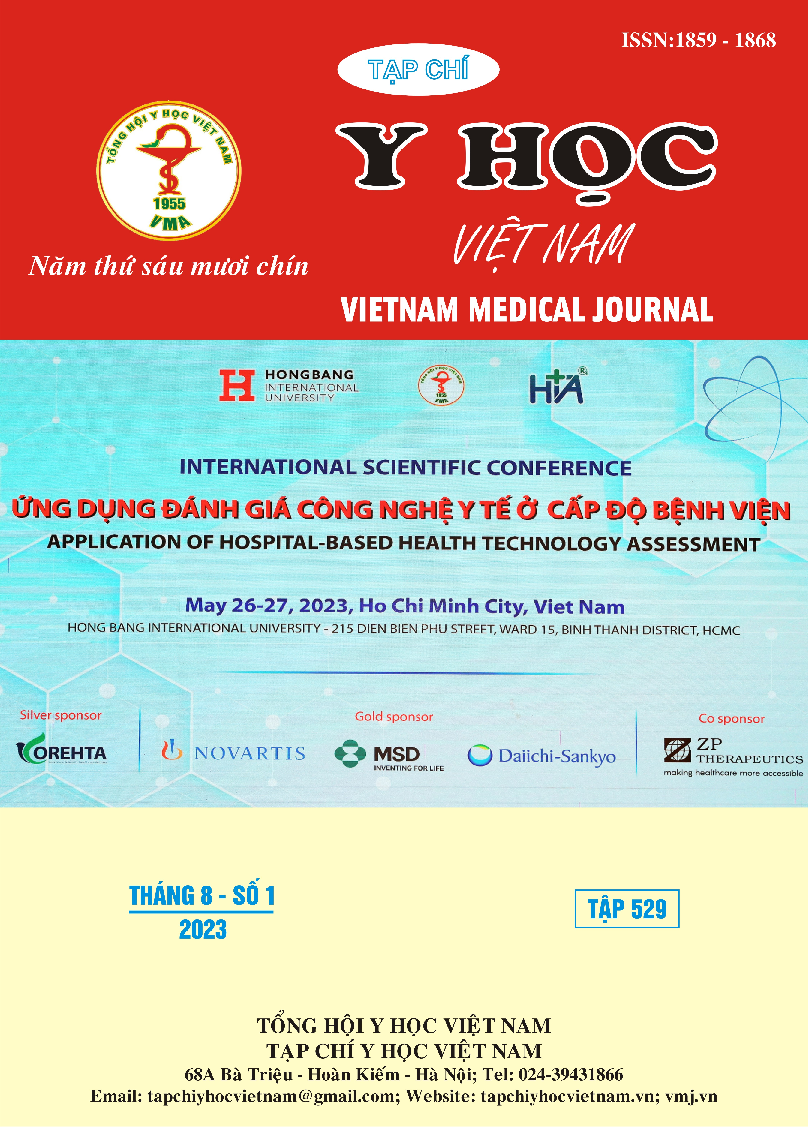ĐÁNH GIÁ HIỆU QUẢ PHẤU THUẬT NỘI SOI ĐIỀU TRỊ XẸP NHĨ GIAI ĐOẠN 4
Nội dung chính của bài viết
Tóm tắt
Mục tiêu: (1) Mô tả hình thái lâm sàng, nội soi và thính lực của xẹp nhĩ giai đoạn cuối. (2) Đánh giá hiệu quả của phẫu thuật nội soi qua đường ống tai điều trị xẹp nhĩ. Đối tượng và phương pháp: Nghiên cứu tiến cứu có can thiệp trên 40 bệnh nhân xẹp nhĩ giai đoạn IV được phẫu thuật chỉnh hình tai giữa. Kết quả: Xẹp nhĩ giai đoạn IV chủ yếu là tổn thương xương đe (70%), xương búa (17%) hoặc phối hợp đe - đạp (13%). ABG trước mổ ở 3 tần số 500Hz (48,5dB), 1000Hz (47,8dB) và 2000Hz (49,3dB). ABG sau mổ 3 tháng ở 3 tần số 500Hz (26,1dB), 1000Hz(25,5dB) và 2000Hz (24,3dB). Kết luận: (1) Tổn thương xương con gặp trong bệnh lý xẹp nhĩ giai đoạn IV chủ yếu là xương đe và đe đạp. Vậy xương con để thay thế chỉ cần chuẩn bị 2 loại trụ dẫn thay thế xương đe đơn thuần và thay thế đe đạp (trụ dẫn chữ Y).(2) Nội soi tai chẩn đoán phải được coi là tiêu chuẩn vàng. (3) Giá trị của chỉ số ABG giúp cho việc chẩn đoán tổn thương xương con và đánh giá sự phục hồi khả năng truyền âm của tai giữa. (4) Phẫu thuật nội soi qua ống tai có những ưu điểm: Giải quyết triệt để 4 mục tiêu cho xẹp nhĩ giai đoạn cuối, kiểm soát các ngách ẩn náu bệnh tích, hạn chế tối đa tổn thương xương con, vùng mổ hẹp không phá huỷ rộng rãi, vẫn đảm bảo dẫn lưu tốt.
Chi tiết bài viết
Từ khóa
Xẹp nhĩ, gốm sinh học, chỉnh hình tai giữa
Tài liệu tham khảo
2. Nguyễn Tấn Phong (2002). “Bước đầu đánh giá kết quả điều trị viêm tai dính”, Kỷ yếu công trình nghiên cứu khoa học, trang 84-86.
3. Nguyễn Tấn Phong (2010). “Phẫu thuật nội soi chỉnh hình tai giữa trên bệnh nhân viêm tai giữa mạn tính ổn định”, Y học thực hành, trang 56-62.
4. Nguyễn Tấn Phong, Phạm Thị Cơi (2003). “Hình thái thính lực và nhĩ lượng đồ ở bệnh nhân viêm tai dính”, Nội san Tai Mũi Họng – Hội nghị Cần Thơ.
5. DeRowe Ari (2005). “Long – term outcome of atticotomy for cholestaetoma in children”, Otol Neurotol, 26(3): 472-475.
6. Koury E, Faris C, Sharma S, Quinn S.J. (2005). “How we do it: free conchal cartilage revisited for primary reconstruction of attic defects in combined approach tympanoplasty”, Clinical Otolaryngology, 30(5): 465-67.
7. Sadé J. (2000). “The buffering effect of middle ear negative pressure by retraction of the pars tensa”, Am J Otol, 21(1): 20-23
8. Sudhoff H, Tos M. (2000). “Pathogenesis of attic cholestaetoma: clinical and immunohistochemical support for combination of retraction theory and proliferation theory”, Am J Otol, 21(6): 786-92.
9. Young N, Chole R. (2002). “Retraction pocket cholesteatoma”, Current opinion in Otolaryngology & Head and Neck surgery, 10(5): 355-9.


